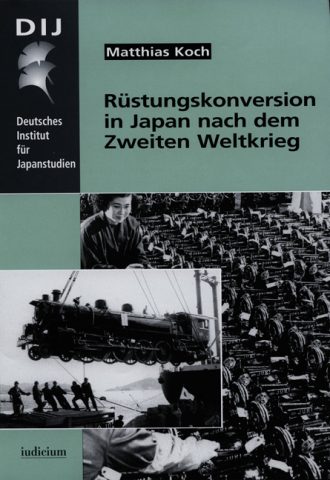
細部
1998, ISBN 3-89129-503-0, € 50,00, iudicium Verlag, Munich, 449 pp., hardcover [オーダー]著者
Rüstungskonversion in Japan nach dem Zweiten Weltkrieg: Von der Kriegswirtschaft zu einer Weltwirtschaftsmacht (第二次世界大戦後の日本経済の軍需から民需への転換(独文))

In volume 23 of its monograph series, the German Institute for Japanese Studies presents an empirical study entitled “Conversion from Military to Civil Production in Japan after the Second World War”. This conversion is examined in the context of post-war economic history depicting the transformation process from war to peace and the development of export industries. The focus is on the policy of reconversion, and the implementation and results of the conversion policy in private industrial enterprises.
The book begins by outlining the process of Japanese transformation of a military to a civil economy. It then presents the state of research on this subject and evaluates the sources used for previous research. Koch’s approach emphasizes the use of primary sources, such as Japanese business histories (shashi) and original applications and permits for (re)conversion, and is divided into two sections: policy of reconversion, and economics of reconversion. The first section examines mainly the political and administrative aspects of the application procedure, and presents concrete results of the first year of conversion, the relation between reparation policy and conversion policy, as well as the Korean War and the rearmament in Japan after the Second World War. The second section analyses typical case studies from selected branches of industry; for instance, the heavy, chemical, electrical, aircraft, optical, and automobile industries in consideration of the conversion of military arsenals, which played an important role during the process of industrialization in Japan. This aims to offer generalized statements and conclusions about conversion in Japan after the Second World War, and about the process as a whole.
The author’s view is that the policy of economic demobilization and demilitarization led not simply to the shut-down of private war plants and state-owned military arsenals, and the dismantling, shipment or destruction of its production facilities, but also to (re)conversion in a much wider sense, aiding Japan’s successful integration into the global economy.